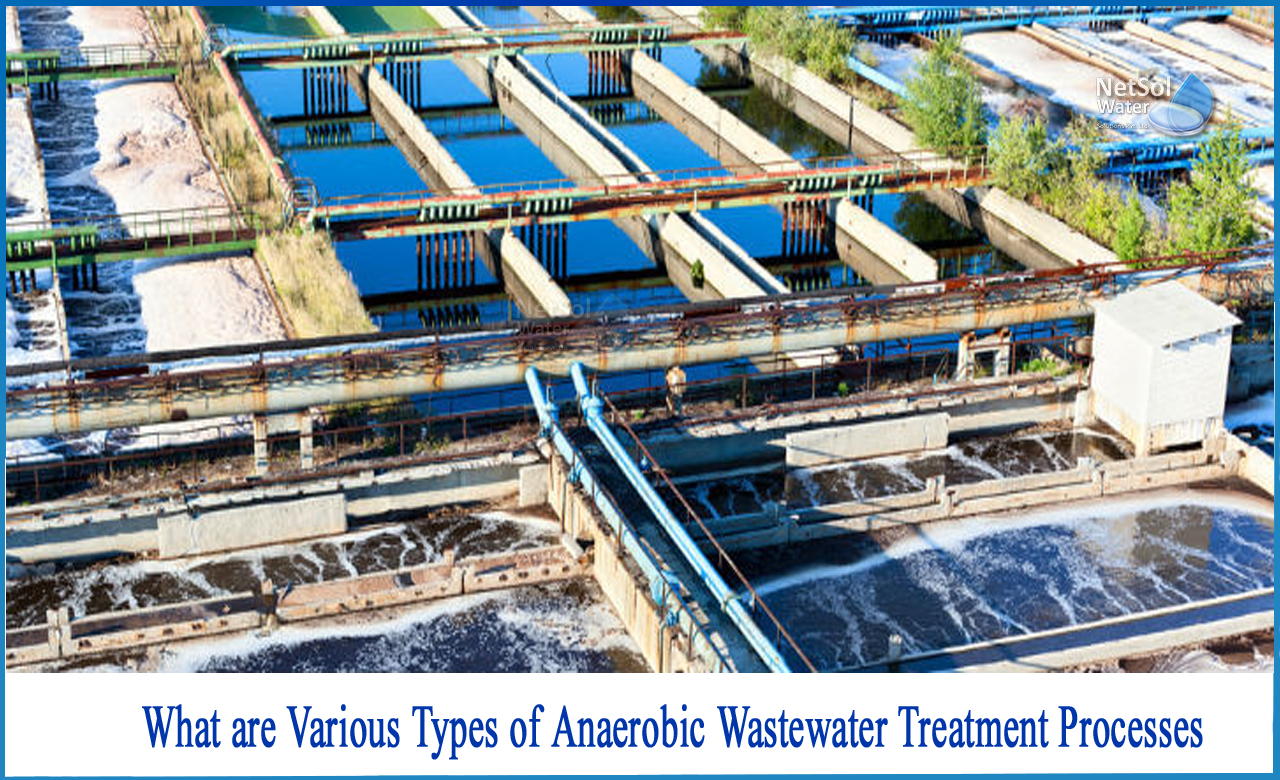What are various types of Anaerobic WWT Processes?
Anaerobic treatment is a biological technique that uses microorganisms to break down organic pollutants in wastewater in the absence of oxygen.
These organisms, on the other hand, use oxygen from the oxides put into the system or from organic matter found in wastewater, slurries, and sludge. Anaerobic microorganisms, often known as "anaerobes," turn organic contaminants in wastewater into biogas. Methane and carbon dioxide are the reason for the majority of biogas. After being treated to minimize or eliminate hydrogen sulfide, biogas can be utilized as a fuel substitute.
Anaerobic treatment has several stages and is popular because it stabilizes water in the first stage without producing too much biomass. It is being used to treat wastewater from a variety of businesses, such as food processing, paper and pulp manufacturing, and sewage with high levels of organic material, frequently before aerobic treatment.
Types of Anaerobic Treatment
Anaerobic digester systems can be constructed as single-stage or multi-stage units, with a separate acidification tank and bioreactor unit depending on individual application needs and facility restrictions.
The following are examples of anaerobic wastewater treatment systems-
1: Anaerobic lagoons
Anaerobic lagoons are enormous man-made ponds that can be up to 20 feet deep and range in size from 1-2 acres. They're commonly used to treat agricultural wastewater from meat processing, as well as other industrial wastewater streams and as a main treatment stage in municipal wastewater treatment.
Typically, wastewater is pumped to the lagoon's bottom, where it settles into an upper liquid layer and a semi-solid sludge layer. The liquid layer prevents oxygen from reaching the sludge layer, allowing the organic compounds in the wastewater to be broken down through anaerobic digestion.
BOD/COD levels can be brought to the target range in as short as few weeks or as long as six months on average. Anaerobic bacteria like certain environmental parameters, such as warm water temperatures (85-95 °F) and a near-neutral pH, therefore maintaining ideal circumstances will increase anaerobic microbe activity, resulting in a shorter wastewater detention time.
A variety of factors, including changes in BOD/COD concentrations and the presence of chemicals like sodium, potassium, calcium, and magnesium, might slow down anaerobic respiration.
2: Anaerobic sludge blanket reactors
In sludge blanket reactors, the wastewater is conveyed across a free-floating "blanket" of suspended sludge particles. As the anaerobes in the sludge proliferate and gather into larger granules that settle to the bottom of the reactor tank and degrade the organic substances in the wastewater, they can be recycled for future cycles. The treated effluent rises and exits the unit. Throughout the treatment cycle, collection hoods collect biogases produced by the degradation process.
Anaerobic sludge blanket reactors come in a variety of shapes and sizes, including:
A: Upflow anaerobic sludge blanket (UASB);
B: Expanded granular sludge beds (EGSBs);
C: Anaerobic baffled reactors (ABRs);
3: Anaerobic filter reactors
Anaerobic filter reactors are made out of a reactor tank and some sort of fixed filter medium. Biofilms are formed when anaerobic microorganisms are permitted to establish themselves on the filter medium. Plastic films and particles, as well as gravel, pumice, bricks, and other materials, are commonly used as filter media in different systems. New filter media must be injected with anaerobes, and it may take several months for the biofilm to develop itself to the point where it can be treated at full capacity.
The wastewater stream is passed through the filter medium during treatment cycles, which captures particles from the stream while also providing enough surface area for anaerobes in the biofilm to be exposed to the organic compounds present in the stream. Filter reactor performance must be closely monitored over time, since the filter media will eventually become clogged with excess biofilm and particulate build-up, necessitating maintenance procedures such as backwashing and cleaning.
How can we help?
Feel free to contact Netsol Water with any queries you may have about custom-designing and manufacturing biological wastewater treatment systems for a variety of industries and applications. We can help you through the process of determining the best solution and determining a reasonable price for your individual water/wastewater treatment system requirements.
Netsol Water is Greater Noida-based leading water & wastewater treatment plant manufacturer. We are industry's most demanding company based on client review and work quality. We are known as best commercial RO plant manufacturers, industrial RO plant manufacturer, sewage treatment plant manufacturer, Water Softener Plant Manufacturers and effluent treatment plant manufacturers. Apart from this 24x7 customer support is our USP. Call on +91-9650608473, or write us at enquiry@netsolwater.com for any support, inquiry or product-purchase related query.



